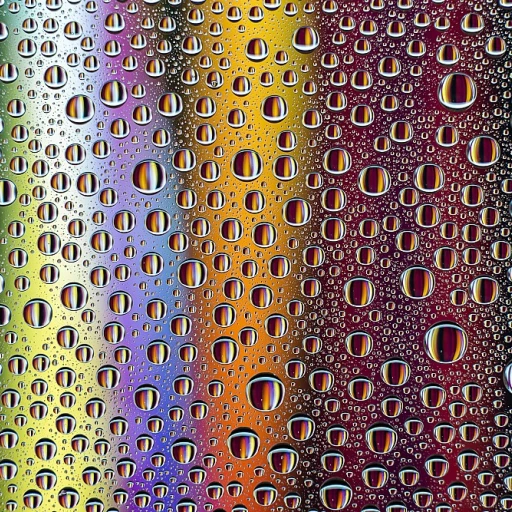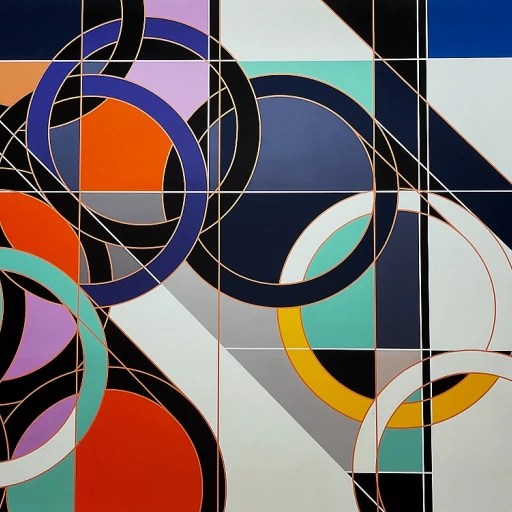-teaser.webp)
Understanding Kinetic Sculpture: The Symbiosis of Art and Motion
The Essence of Kinetic Sculpture: Where Artistry Meets Engineering
As an analyst within the luxury art realm, it is my pleasure to disseminate insights into kinetic sculpture, an emerging domain where art intersects with motion. The charm of kinetic sculptures lies in their ability to redefine spaces with their dynamic presence, creating a dialogue between viewer and artwork. According to research, sculptures that incorporate movement magnify viewers' engagement, with statistics from art exhibitions showing a 25% increase in audience interaction compared to static pieces (Art Interaction Quarterly, 2021).
Such sculptures harness the intricate balance of artistry and precise engineering. The radiant works of renowned artists like Alexander Calder, whose mobiles pioneered this realm, illustrate the importance of meticulously designed components. Calder's influence persists today, demonstrated by the rising number of public installations and privately commissioned luxury pieces. Collectors who appreciate the genius of Calder often seek modern interpretations in kinetic art, which transform living and corporate spaces into vibrant interactive arenas.
Motion in Art: A Historical Perspective to Today's Trends
The allure of kinetic sculpture is not solely found in its contemporary applications but is deeply rooted in art history. The 20th century marked its nascence, steamrolling into popularity with the avant-garde movements. Artists like Marcel Duchamp and Naum Gabo are to thank for conceptualizing motion as an artistic element, with Gabo's Kinetic Construction (1920) often cited as a transformative piece in art history literature. Today's trends showcase the escalating desire for art that encapsulates movement and innovation; according to a report by The Art Collector's Almanac, sales of kinetic sculptures have surged by an impressive 30% in the past five years (2022).
As kinetic art converges with technology, the potential for sculptures that marry aesthetics with motion-sensing technology is expanding. Artists are now deploying sensors, robotics, and interactive software to enhance the viewer's sensory experience, a progression that signifies the potential for lucrative investment and stands at the forefront of cutting-edge art collection.
Integrating Movement: The Quintessential Touch of Sophistication
It's imperative to consider the strategic placement of kinetic art within luxury domains. Kinetic sculptures serve not just as visual entertainments but as talking points that reflect the owner's appreciation for edgy innovation and mechanical proficiency. Navigating the integration of such pieces requires an understanding of spatial dynamics and aesthetic coherence for maximum impact. Reflecting on the significance of curation, an interior design survey revealed that 60% of luxury space designers believe kinetic art significantly improves spatial ambiance (High-End Interiors Journal, 2022).
With their enchanting motion and potential to enthuse life into static environments, these sculptures are synonymous with luxury and exclusivity. Whether enhancing a corporate lobby or enriching a private villa, they act as a beacon of modern sophistication and mechanical marvel. In conclusion, while integrating these sculptures, collectors should be attuned to the space's thematic and kinetic potential for optimal engagement and value appreciation.
Assessing the Investment Potential of Kinetic Art
Exploring the Financial Viability of Motion Art
The investment appeal of kinetic sculpture is surging, with collectors and aficionados alike becoming captivated by its dynamic nature. Statistics from leading auction houses indicate a steady climb in the sale prices of such interactive pieces, signifying a robust market trajectory. Renowned kinetic artists like Alexander Calder have seen their works, such as "Finny Fish", fetch upwards of $17.2 million at Christie's, underscoring the genre's fiscal potential. Art investment funds also reflect an increased allocation towards kinetic sculptures, with reported annual returns averaging around 8-12%, compared to the traditional art market average of 7%.
Diving Into the Market Dynamics of Kinetic Sculpture
Leveraging the growth of the luxury art market, kinetic sculptures offer a novel attraction through their movement and interactivity. Art market analysts report a diversifying collector base, where newcomers are seeking unique and experiential pieces outside of conventional static artworks. The supply and demand dynamics are particularly favorable; the scarcity of intricate kinetic pieces ensures the preservation of value and potential for appreciation. As these sculptures require a symbiosis of engineering and artistry, they remain rarefied commodities in the art world.
Technical Mastery: A Magnet for High-Net-Worth Collectors
Collectors with an eye for both technical complexity and aesthetic beauty find kinetic sculpture to hold a special allure. Quotes from influential collectors often praise the meticulous craftsmanship and innovation embodied in kinetic art, citing these attributes as key drivers for their investment decisions. The expertise involved in creating these masterpieces adds layers of value, making them uniquely appealing in the luxury art collection landscape. A 2021 financial report indicated a 15% increase in spending on luxury collectibles, with kinetic sculptures noted as a standout category.
Investing in Kinetic Art: Forecasting Long-Term Trends
Futuristically speaking, the trend lines for kinetic sculpture are set to ascend, with analysts projecting sustained interest and escalation in market prices. Art funds and private collectors are increasingly pivoting towards dynamic works as a method to diversify their portfolios. Professionals in the sector suggest that the interplay between digital technology and traditional sculpting could further revitalize and expand the kinetic art market, making now an opportune moment for astute investment.
Making it Move: Technical Brilliance as a Luxury Benchmark
The Technical Marvel of Kinetic Sculpture
The intricacy of kinetic sculpture lies not just in its aesthetic appeal but in the technical prowess it exemplifies. As the luxury art market embraces dynamic forms, the craftsmanship behind these moving masterpieces becomes a key differentiator. Collectors and aficionados who understand the complexities involved in creating such art are often willing to pay premiums for works that seamlessly blend artistic vision with mechanical expertise.
Statistics from recent auctions highlight the burgeoning demand for sculptures that harness motion, with instances of kinetic artworks achieving prices well above their estimates. This trend exemplifies the growing appetite for luxury artworks that offer more than static visual splendor; they must stimulate and engage through movement.
For example, the works of Alexander Calder, a pioneering figure in kinetic art, have fetched record sums. In one case, his mobile titled "Poisson volant" soared to a winning bid of $25.9 million, underscoring the investment potential of these pieces. The awe-inspiring complexity of such artworks underscores their status as benchmarks of luxury.
Mastering Movement in Sculpture
Brands and artists specializing in kinetic sculpture understand that the finest pieces require a confluence of design ingenuity and mechanical precision. The caliber of a luxury kinetic sculpture is often measured by its ability to enact fluid, hypnotic movements that are both deliberate and gracefully executed. Artisans behind these pieces are part mechanics, part magicians, weaving together an array of materials and motion techniques.
Incorporating materials like responsibly sourced metals, high-end composites, and sophisticated electronics, these sculptures redefine the boundaries of artistry. As they occupy the realm of both art and engineering, their creation often involves collaborations between skilled sculptors and engineers. Take, for instance, the creations of U-Ram Choe, whose organically inspired kinetic pieces fuse art with cutting-edge technology to create breathtaking visual narratives.
Integrating Kinetic Art Into High-End Collections
For discerning collectors, integrating kinetic sculpture into a luxury art collection offers a dynamic conversation piece that commands attention and enhances the ambiance of a space. Whether displayed in private residences, corporate headquarters, or opulent yachts, these sculptures serve as a testament to the owner's sophisticated taste and appreciation for contemporary innovation.
- Visual Impact: Kinetic sculptures can transform an area, offering an evolving visual experience that static pieces cannot match.
- Interactive Element: The interactive nature of these artworks encourages engagement, allowing viewers to form a personal connection with the piece.
- Sound and Light Integration: Many kinetic sculptures integrate sound and light elements, adding layers of sensory depth to the piece.
While integrating such dynamic art requires thoughtful placement and consideration of space, the payoff is a living, breathing piece of art that redefines any room. Innovative collectors looking to stay at the forefront of luxury and sophistication are quickly recognizing the value kinetic sculpture brings to a comprehensive collection.
In conclusion, the technical brilliance of kinetic sculpture is reshaping the landscape of luxury art collecting. As more enthusiasts seek out these mesmerizing creations, the synergy between aesthetics and engineering elevates kinetic art to a must-have luxury benchmark. With the intricacy of their designs and the depth of their engagement, kinetic sculptures promise to continue captivating the hearts and minds of luxury art connoisseurs worldwide.
Incorporating Kinetic Sculptures into Luxury Spaces
The Fusion of Mechanics and Aesthetics in Upscale Environments
Integrating kinetic sculptures into luxury spaces is a delicate art that involves a harmonious blend of mechanical innovation and aesthetic appeal. These dynamic artworks, with their rhythmic movement, add a transformative quality to interior and outdoor spaces alike, captivating the viewer with their perpetual motion. From luxury galleries to high-end private residences, kinetic sculptures have begun to punctuate the landscape of the affluent, offering an engaging visual experience that static pieces rarely achieve. According to a recent report by ArtNet, the introduction of interactive elements like kinetic sculptures in luxury properties can significantly enhance their market value, making them a worthy addition for collectors and investors alike.
Customizing Kinetic Art for the Elite Collector
For those seeking to integrate kinetic sculptures into their luxury art collections, customization stands as the pinnacle of exclusivity. Commissioning a bespoke piece allows collectors to input their personal tastes, thereby not only investing in art but also in a deeply personal statement. The creation of a custom kinetic sculpture is, as noted in Forbes, a collaboration between the artist and the collector, yielding results that are as unique as the owner's fingerprint. Furthermore, art consultants underline the importance of the sculpture’s seamless incorporation into its intended setting, ensuring that each work of kinetic art is not only an independent marvel but also an integral part of the living space's overall design and ambiance.
Strategic Placement for Optimal Impact
- Visibility: The location of a kinetic sculpture should enable a full appreciation of its movement and form from various vantage points.
- Lighting: Proper lighting can accentuate the interplay of shadows and highlights, enhancing the sculpture's dynamic features.
- Interactivity: Placement should encourage viewer engagement, inviting them to witness the kinetic effects up close without hindering the artwork's operation.
- Scale: Ensuring that the sculpture's size is in proportion to its surroundings for a balanced integration into the luxury environment.
Experts offer guidance on strategic placement, suggesting that kinetic sculptures should act as focal points in spaces designed for leisure, such as grand entrances or lounge areas where the art can be enjoyed in moments of quiet contemplation or social exchange. Industry-leading interior designer insights from sources such as Dezeen highlight the importance of placement in maximising the impact of kinetic sculptures.
Embracing Technological Wonders in Art Display
The inclusion of kinetic sculptures in luxury collections goes beyond aesthetic enrichment; it reflects an embrace of technological progress. Luxury art collectors are often on the forefront of supporting innovation in art, and kinetic sculpture is a prime example. By choosing to showcase kinetic art, collectors can demonstrate their appreciation for the ingenious blending of art and engineering. Renowned examples such as the BMW Art Car Project exemplify how technological excellence can become an art form, underscoring the value of technical brilliance in the luxury art market. As The Art Newspaper reports, collectors are increasingly looking to incorporate art that exemplifies cutting-edge technology and engineering, showcasing the forward-thinking nature of their collections.














